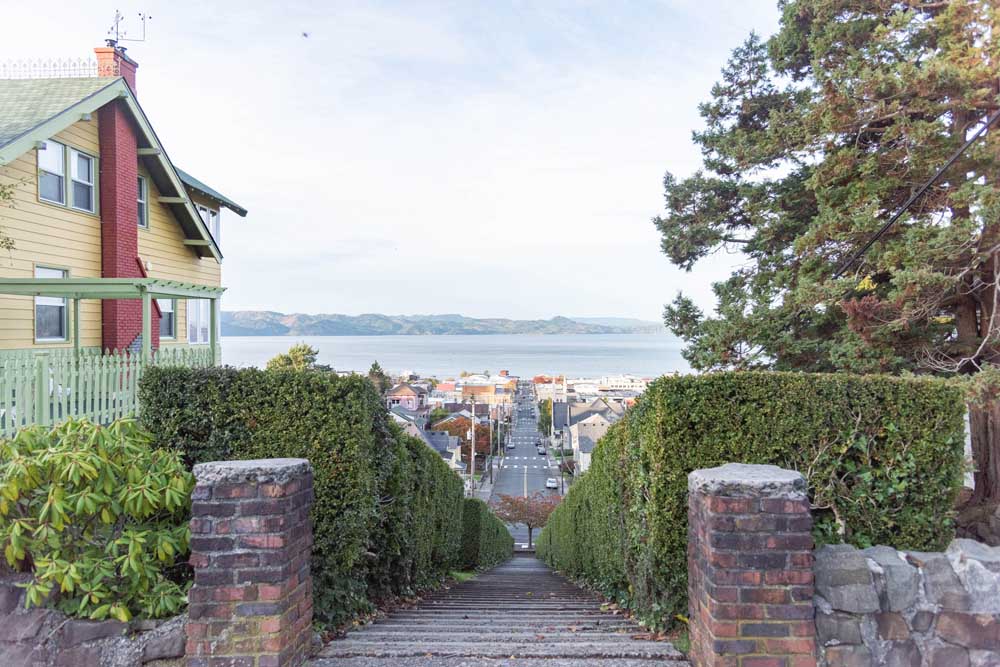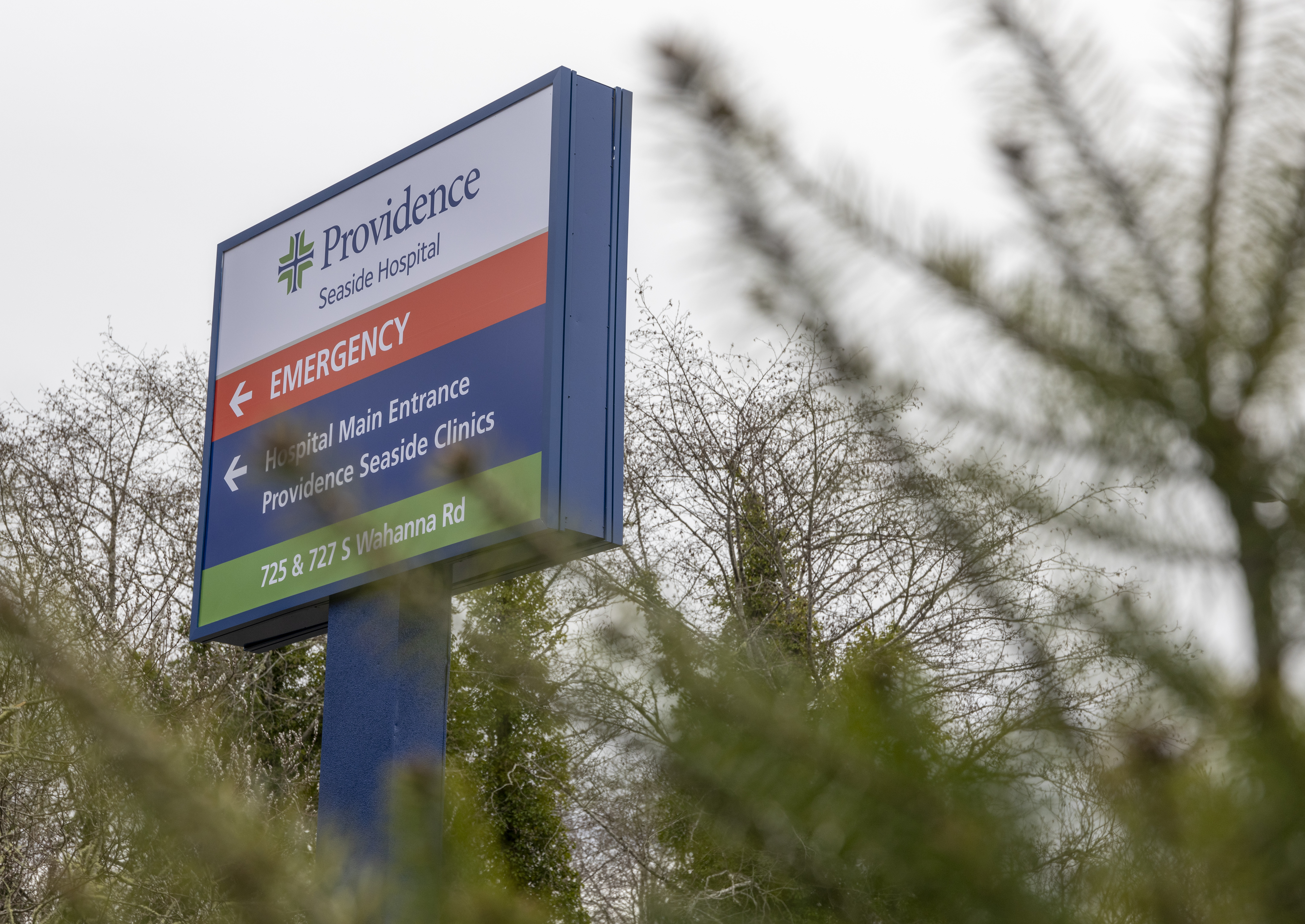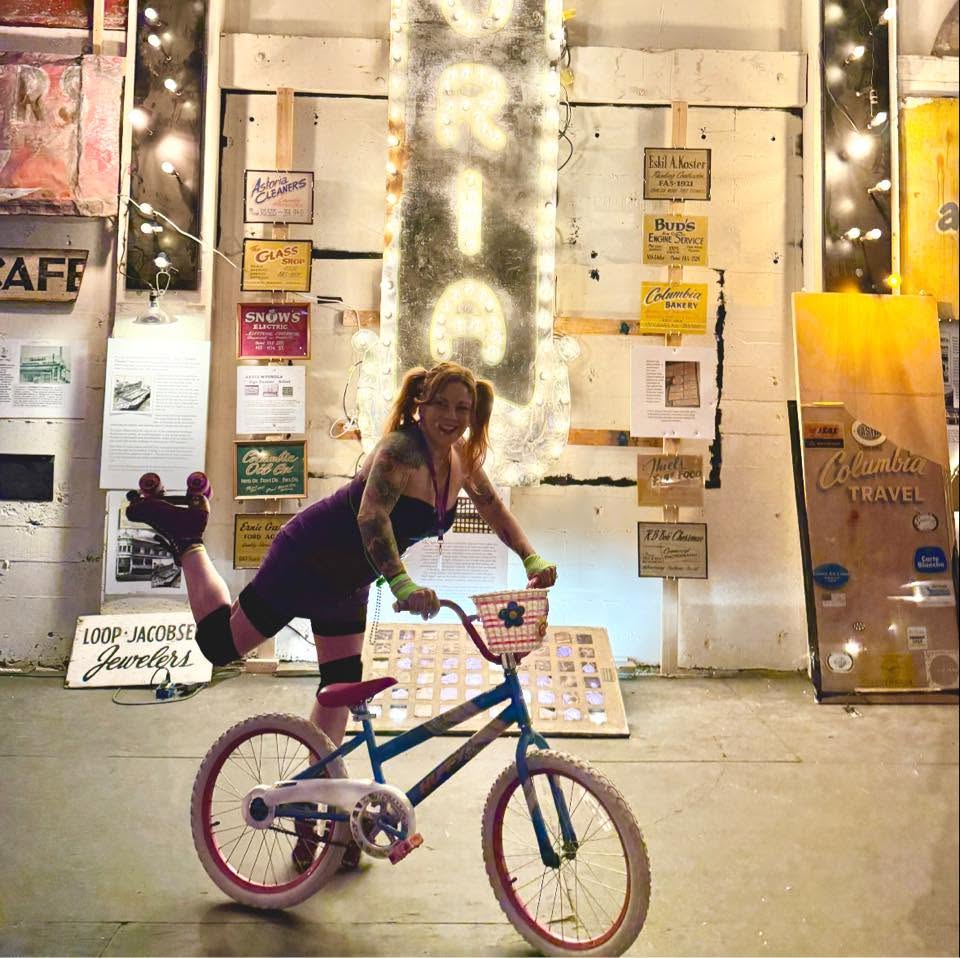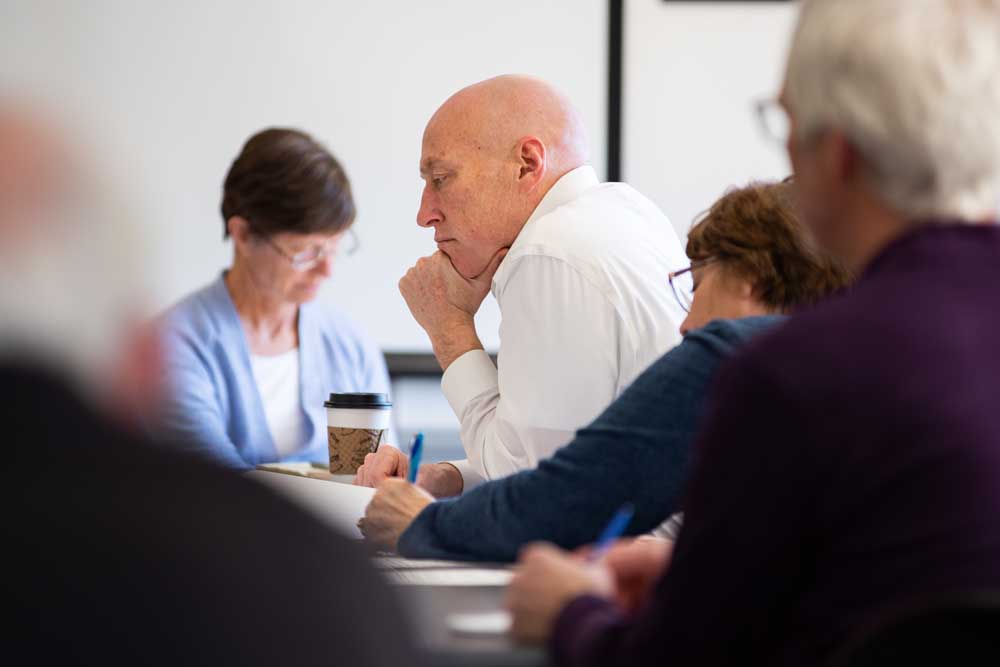Atop the 11th Street stairs, a property owner at odds with the city
Published 12:15 am Monday, November 22, 2021

- The 11th Street stairs offer a sweeping view of the city and the Columbia River.
Like many people in Astoria, Billie O’Neel wanted a garden that was safe from deer.
Trending
When she built a fence to keep the marauding animals out of her property on Jerome Avenue, she ran into issues with the city. The fence was taller than code allowed. Then there was the deck. She wanted flat areas for her husband, who is handicapped, to be able to safely walk.
But O’Neel had built both the fence and the deck over a deteriorating retaining wall in a city right of way without first obtaining the necessary permissions. The city is also investigating other possible code violations.
O’Neel, who bought the property in 2011, knows she overstepped. She built during an opportune window when workers and supplies were available and the weather was good.
Trending
“I did not go down to City Hall to ask for permission,” she said. “I built what I thought was appropriate … I may be wrong in what I’ve done, but I did it in the most correct way possible.”
For O’Neel, it partly comes back to how the city has maintained — or, as O’Neel’s contends, has not maintained — the public property next door: the 11th Street stairs.
The city was not going to step in and deal with the retaining wall, she said. O’Neel would have preferred to rebuild the wall within the bounds of her own property, but said contractors advised her not to touch it. A new wall would have to be built back against the foundation of the house.
“So there we were, left with this crumbling wall that the city won’t do anything about and that we can’t do anything about,” O’Neel said. “So the only choice was to cover it up and make use of it as best we could.”
‘Pigeon steps’
Ask someone where the pigeon steps are in Astoria and they’ll likely point to the steep staircase that climbs 11th Street between Irving Avenue and Jerome, said local historian and preservationist John Goodenberger.
Astoria has several of these so-called “pigeon steps” — shallow, narrow steps set on the city’s hilly sidewalks — but the 11th Street stairs are the most obvious and picturesque example.
The staircase is a natural draw for locals and the many visitors who roam up from downtown. Goodenberger lives near the stairs and has a new appreciation for the interest they command. He constantly sees people walk up them to take a picture from the top.
The staircase is formed like an inverted “Y,” the lower branches curving around a raised flower bed that contains a wide-armed cherry tree. From there, a steep staircase rises, bordered by hedges. It ends on Jerome, where people get a sweeping view down 11th Street and across the Columbia River.
The stairs echo the early history of the oldest settlement west of the Rockies, when Astoria’s first sidewalks were not concrete but wood. To be precise: “wood planks fastened crosswise to beams laid directly in the mud,” Goodenberger wrote in a 2001 article about the steps.
Early Astoria was not an easy town to navigate. On rainy days, the city’s wood sidewalks — especially those going uphill — could be treacherous. To solve this problem, some sidewalks had wood cleats or slats nailed to them.
When the city’s sidewalks were converted to concrete between 1915 and 1930, the slats were reimagined as shallow steps —pigeon steps.
The 11th Street stairs, designed by a city engineer named Alfred Tee, were built in 1927 to address what residents termed the “toboggan slide” on that particular street. Tee did not need to make the stairs beautiful, but he did, Goodenberger said. Other pigeon steps, like the ones that climb Eighth Street across from McClure Park, are much more workmanlike and not nearly as photographed.
“These steps, while not unique, are special,” Goodenberger concluded in his article. “They are subtle, easily overlooked details which set Astoria apart from other cities — especially dreary, sprawling suburbia. They are a reminder of a time when pedestrians were more than an afterthought to street design.”
The 11th Street stairs and surrounding green space are included in the city’s parks master plan and parks staff care for the property. Maintenance is minimal, however, and overall restoration work is not something the department has considered tackling. There are cracks in the structure and the decorative colonnades at the top of the stairs are in disrepair. Still, it is functional.
“It’s a throughway and just a point of view,” Jonah Dart-McLean, the city’s parks director, said, “and it serves that purpose well.”
O’Neel has offered to fund the work to restore the colonnades. That work is going forward. But she thinks the city could be doing more to preserve the stairs and the property as a whole. If more extensive work had been done in the past, she feels she wouldn’t be dealing with some of the issues on her property now.
‘They know their job’
O’Neel and her husband, who live in Arkansas, have visited Astoria for decades and long planned to buy a home here. They hope to move into the Jerome house once renovations are complete.
For the city, the fact remains that O’Neel proceeded with significant work on the property without first consulting the city and gaining required permits.
O’Neel has submitted an application for a license to occupy the right of way, which, if approved, would allow her to keep the fence and the deck she has built. Engineering staff are reviewing her request and will make a recommendation that could go to the City Council for consideration.
O’Neel has already reached out to her elected official, City Councilor Joan Herman, who represents the district where O’Neel’s house is located. Herman herself lives nearby.
Herman can sympathize with O’Neel’s dilemma to an extent.
“I know it’s difficult having any government tell you what you can and can’t do with your property,” Herman said. But, she added, “that’s the reality of living in a community.”
In the end, Herman said the situation is up to city staff, who, in her opinion, have gone out of their way to meet with O’Neel, explain the city’s requirements and work through what is possible.
“I trust them to do a good job,” she said. “They know their job.”
As for the 11th Street stairs, she feels they are an important part of the city’s landscape, something she would want to see preserved, but there are other, more pressing priorities.
The city faces costly infrastructure improvements to keep water and sewer systems working properly, projects that cost millions of dollars, according to a recent presentation to the City Council. Those projects are much more on Herman’s mind than the condition of the pigeon steps.









